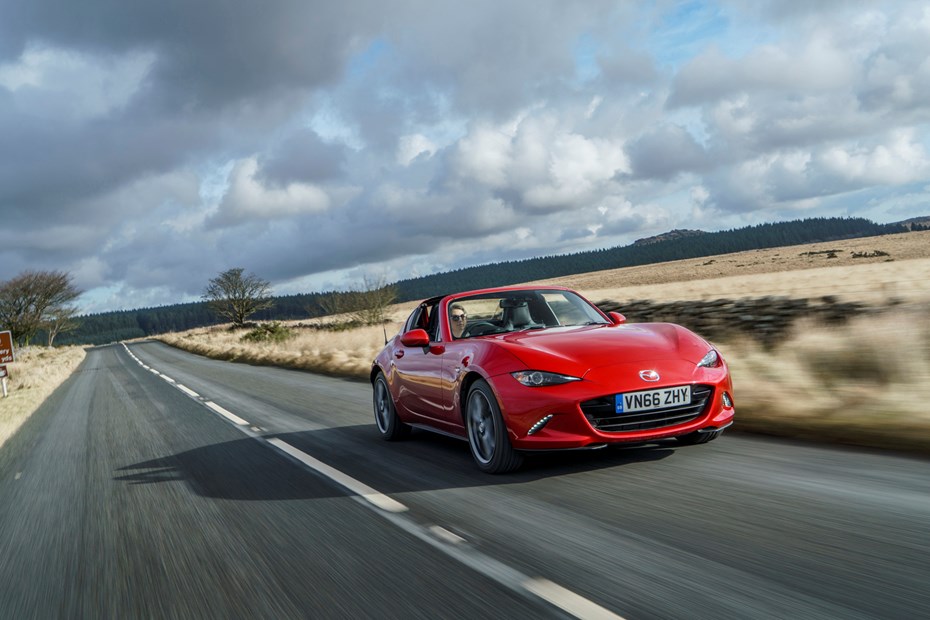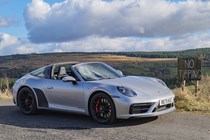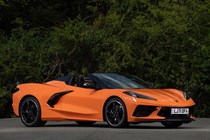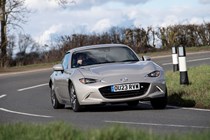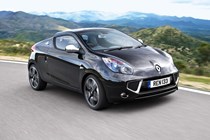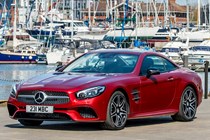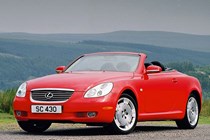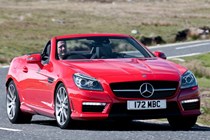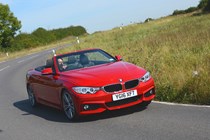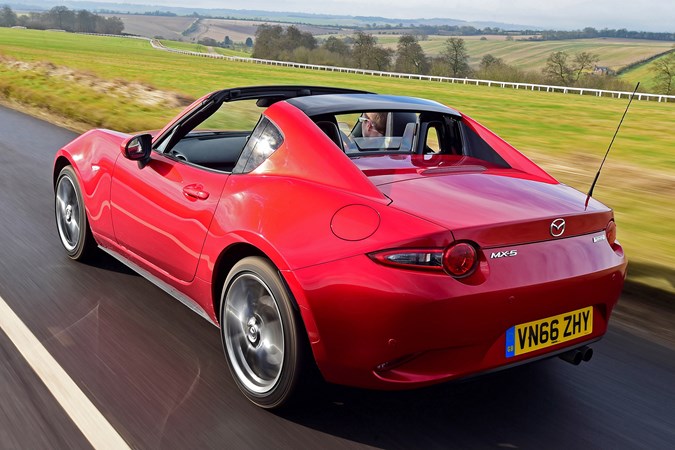Hardtop convertible cars used to be a common sight on UK roads. In the early 2000s, loads of mainstream manufacturers dabbled with the body style – and the cars found favour with British drivers because they offered all the benefits of a soft-top with none of the drawbacks. In a country as wet and cold as ours, they make a lot of sense.
But they’re living on borrowed time. Now, if you want a hardtop convertible, your choice is limited to a couple of affordable new cars, a handful of eye-wateringly expensive supercars and a vast array of used models.
Mainstream manufacturers have now shied away from the roof style because it’s difficult to engineer and heavy, which ultimately makes it harder for the car to pass its all-important emissions tests – an important consideration when you’re shifting huge volumes of vehicles.
However, the appeal of owning a car with a quiet, solid roof that can be tucked away the second the sun breaks through the clouds is still very strong. If you fancy a slice of the action, we’ve rounded up the best new (and nearly new) hardtop convertibles on sale to make your search a bit easier. Scroll down to see what’s out there.
The best hardtop convertible cars to buy in 2025
It’s exactly like an MX-5, only quieter
Granted, the added weight of the hardtop makes the RF around 45kg heavier than the standard car, which means it isn’t quite as light on its feet. Mazda has tried to compensate for this, though, by fitting it with firmer suspension and a standard limited-slip differential. Net result? Far less body roll when you fling it into a corner. Bonus.
Read our full Mazda MX-5 RF review
Pros
- Added refinement
- Great fun to drive
- Good equipment
Cons
- Pricier than soft-top
- Cramped interior
McLaren 750S
Devastating performance and race-bred engineering
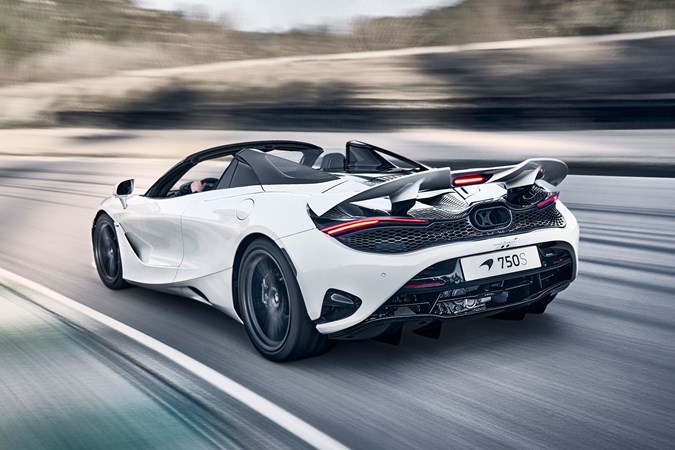

McLaren has made loads of incremental improvements to the car which make it go, stop and corner better than before. The company’s head engineer told us that 30% of the car is new – which is a big change for what’s essentially a facelift. On the track it can scare you witless, while on the road, it can both excite and cosset you depending on your mood. In drop-top form, it’s the ultimate do-anything supercar.
Read the full McLaren 750S review on our sister site, CAR magazine
Pros
- Ferocious performance
- Tenacious handling
- Beautifully built
Cons
- Harsh carbon seats
- Erm… not much else
Ferrari 296 GTS
Ferrari’s idea of an eco-friendly supercar
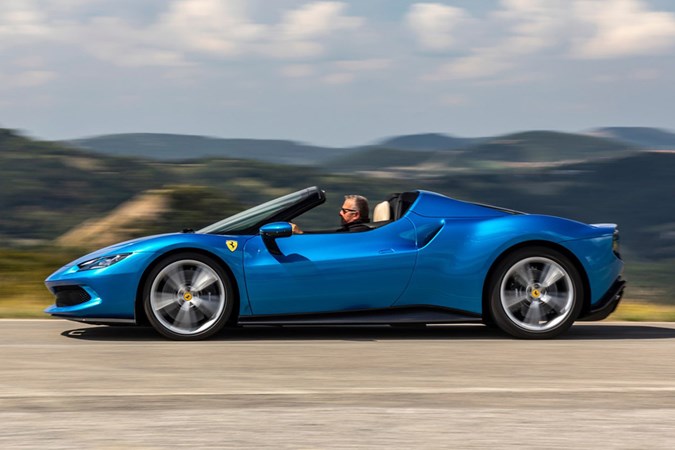

It's also a lot more fun than the standard 296. We’ve always felt that the coupe takes itself a little too seriously but, by removing its roof, Ferrari has injected some character into the Spider. Unlike most convertible supercars, Ferrari has also managed to conduct the operation without sacrificing any of the coupe’s driving dynamics. If you can afford one, it’s well-worth a look.
Read the full Ferrari 296 GTS review on our sister site, CAR magazine
Pros
- Staggering pace
- Stunning looks
- Drives like the coupe
Cons
- Complicated cabin
- But that's about it
The most proficient American sports car yet
We’re not going to say it’s perfect. The rear boot gets incredibly hot, which means you can't use it get your weekly shop. Your milk will have turned to cheese by the time you get home. Its 6.2-litre V8 engine is also very thirsty when driven hard and the interior plastics are bit cheap. But it’s almost a third of the price of the Ferrari 296 GTB – and we’re not convinced that the Ferrari offers three times the thrills.
Read our full Chevrolet Corvette Stingray Convertible review
Pros
- Excellent noise
- Comfortable yet engaging
- Loads of luggage space
Cons
- Rear boot gets very hot
- Only one UK dealer
The (rather excellent) mid-point between the 911 Coupe and Cabriolet
Because most of its roof is solid, the Targa is far more refined than the 911 Cabriolet at speed. Plus, the roof opens and closes delightfully quickly – and with the panel stowed, you can better hear the glorious racket from the 3.0-litre flat-six engine being fired out of the exhaust. It doesn’t feel that different to the Coupe in the bends, either.
Read our full Porsche 911 Targa review
Pros
- Immense speed
- Poised handling
- Peerless quality
Cons
- Complicated roof
- Restricted boot access
It was the frontrunner of the once-booming hardtop convertible scene
It was only sold with the coupe’s most powerful petrol and diesel engines, but that’s not such a bad thing now the car has entered the used market. Depreciation has a firm grip on the oldest models, which means you can get a powerful, premium drop-top for around £10,000. That’s simple maths, as far as we’re concerned.
Read our used BMW 4 Series Convertible review
Pros
- Comfortable cruiser
- Sharp handling
- Strong performance
Cons
- Roof eats boot space
- Heavier than the coupe
Hilariously quick in a straight line
It’s hilarious fun in a straight line, especially when you’ve got the roof down so you can better hear the exhaust noise crackle off the undergrowth. It is heavy, though, which means it isn’t as well balanced in the corners. It folding hardtop takes ages to stow, too. However, used prices have fallen far enough to make it worth living with these sacrifices.
Read our used Mercedes-AMG SLK 55 review
Pros
- Seriously fast
- Engine sounds great
- Lots of standard kit
Cons
- Slow roof operation
- Small boot
Leuxs’s oddball drop-top might soon have its day in the sun
It’s also incredibly cheap. Used prices start from around £7,000, which makes it the perfect hardtop convertible for drivers who want to cover loads of miles. It’s fabulously refined, both with the roof up and down – and its soft suspension and accommodating seats mean you can easily spend all day at the wheel. It’s even quite pokey, thanks to its 286hp 4.3-litre V8.
Read our used Lexus SC review
Pros
- Superb build quality
- Excellent refinement
- Sliky smooth V8 engine
Cons
- Gawky styling
- Not engaging to drive
An elegant convertible from Mercedes’ heyday
Sure, it wasn’t the sharpest-driving car in its class, but it wasn’t exactly a slouch, either. You could have it with the company’s fire-breathing 537hp 5.5-litre V8 engine and some clever active anti-roll suspension that props up the body on the outside edge of the corner to combat lean. Still not sold? Used prices start from a shade under £18,000.
Read our used Mercedes SL review
Pros
- Powerful engines
- Quality interior
- Efficient engines
Cons
- Vague steering
- Expensive servicing
Slightly silly name, but a very fun little car
For the best results, we recommend opting for a car fitted with the smaller turbocharged 1.2-litre petrol engine. It produces 100hp and plenty of low-down grunt, which helps to means the Wind feels more relaxed to drive at sensible speeds. It was a Parkers favourite when it was new remains and an excellent used buy today.
Read our used Renault Wind review
Pros
- Fun to drive
- Clever roof
- Well equipped
Cons
- Only two seats
- Poor rear visibility
Luke Wilkinson is Deputy Editor of Parkers. He has worked as an automotive journalist for five years and specialises in car reviews, news and consumer advice, writing for both Parkers and CAR. He also has a personal interest in classic cars.
Just so you know, we may receive a commission or other compensation from the links on this website - read why you should trust us.


